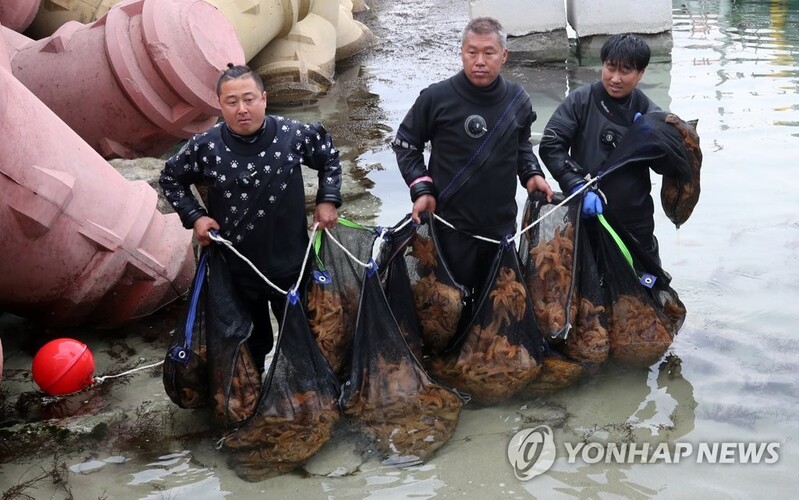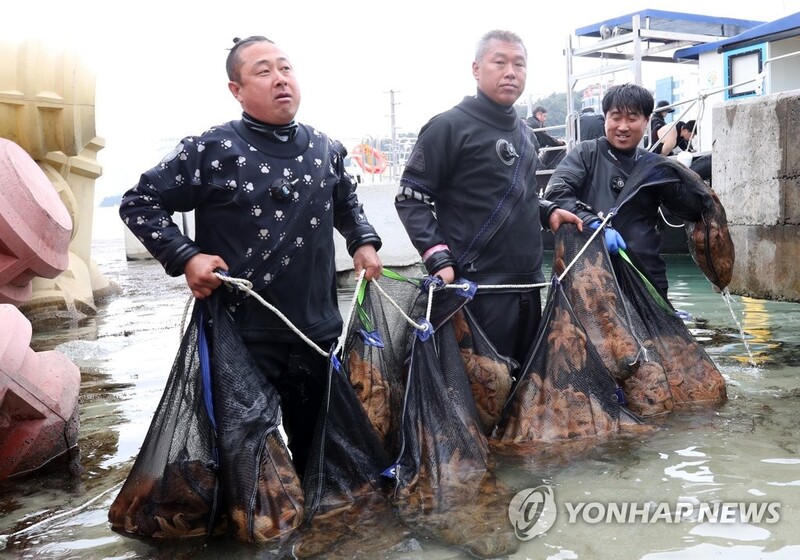 |
| ▲ This photo, shows the divers on rescue operations on the 22nd as the rapid spread of starfish began destroying the underwater ecosystem in Gangnueng Submarine Park. (Yonhap) |
 |
| ▲ This photo, shows the divers showing the starfishes after the rescue operation on the 22nd as the rapid spread of starfish began destroying the underwater ecosystem in Gangnueng Submarine Park. (Yonhap) |
 |
| ▲ This photo, shows the divers on rescue operations on the 22nd as the rapid spread of starfish began destroying the underwater ecosystem in Gangnueng Submarine Park. (Yonhap) |
SEOUL, May 22 (Yonhap) --With the rapid spread of starfish destroying the underwater ecosystem in Gangneung Submarine Park, which is popular among divers, the divers has begun rescue operations.
According to Gangneung City on the 22nd, the number of “Amur starfish” in the submarine park created for divers and attractions is rapidly increasing, devastating the ecosystem with biological resources also reducing.
In order to respond to the changes in tourism trends of the sea, since 2013, the city has installed two 800-ton and 2,400-ton abandoned ships, artificial reefs with each module consisting of reinforced octagonal plates, and four types of waste munitions, including light armored vehicles, in the submarine park.
The submarine park is 113 hectare and was built in the sea about 3km away from Sageunjin Beach, north of Gyeongpo Beach.
It has become a tourist attraction visited by 20,000 tourists annually.
However, it was found that a group of Amur starfish are inhabit in the submarine park.
The Amur starfish is known to cause disturbance in the marine ecosystem.
In particular, it is told that it is a glutton of abalones and mussels, and is a major culprit in the destruction of the ecosystem which is why it is also called a pirate of the sea.
In response, Gangneung City launched an Amur starfish rescue activity to protect the biological resources in the submarine park.
On the morning of the 22nd, about 20 local divers carried out a starfish rescue operation at the submarine park.
In two rescue operations that day, 500 kg of starfish were caught.
A diver who took part in the rescue operation that day said, "Amur starfish loves blue mussels, and with so many blue mussels in this place, so many starfishes are all over the submarine park. Since there are so much Amur starfishes here, if this project wants to work, it would need to be consistently done.”
An official from Gangneung City said, "We plan to investigate and rescue harmful marine organisms in the future to improve the health of the marine ecosystem."
(END)
(C) Yonhap News Agency. All Rights Reserved

























![[가요소식] 지코, 요아소비 이쿠라와 신곡](/news/data/20251212/yna1065624915953509_920_h2.jpg)










